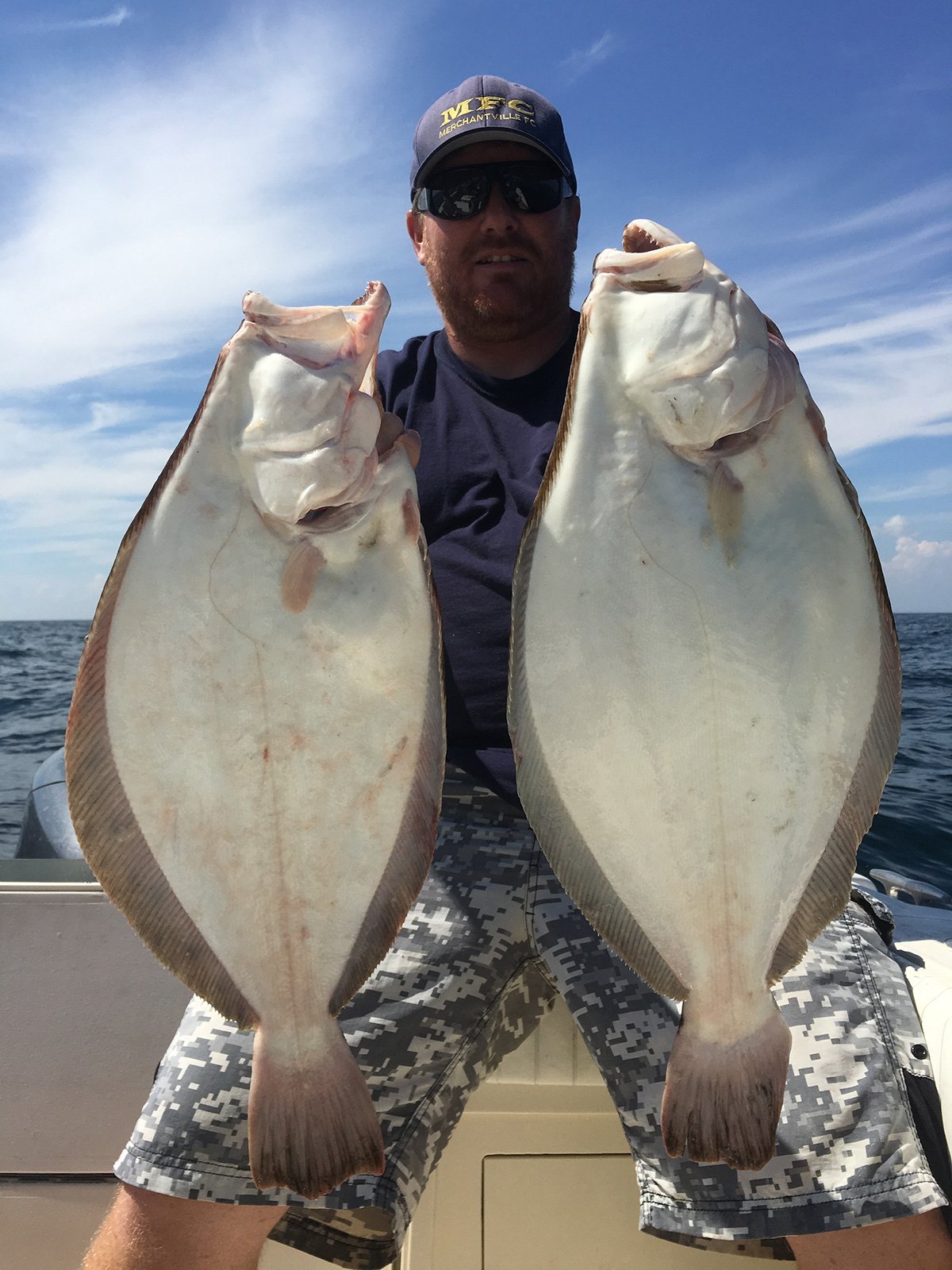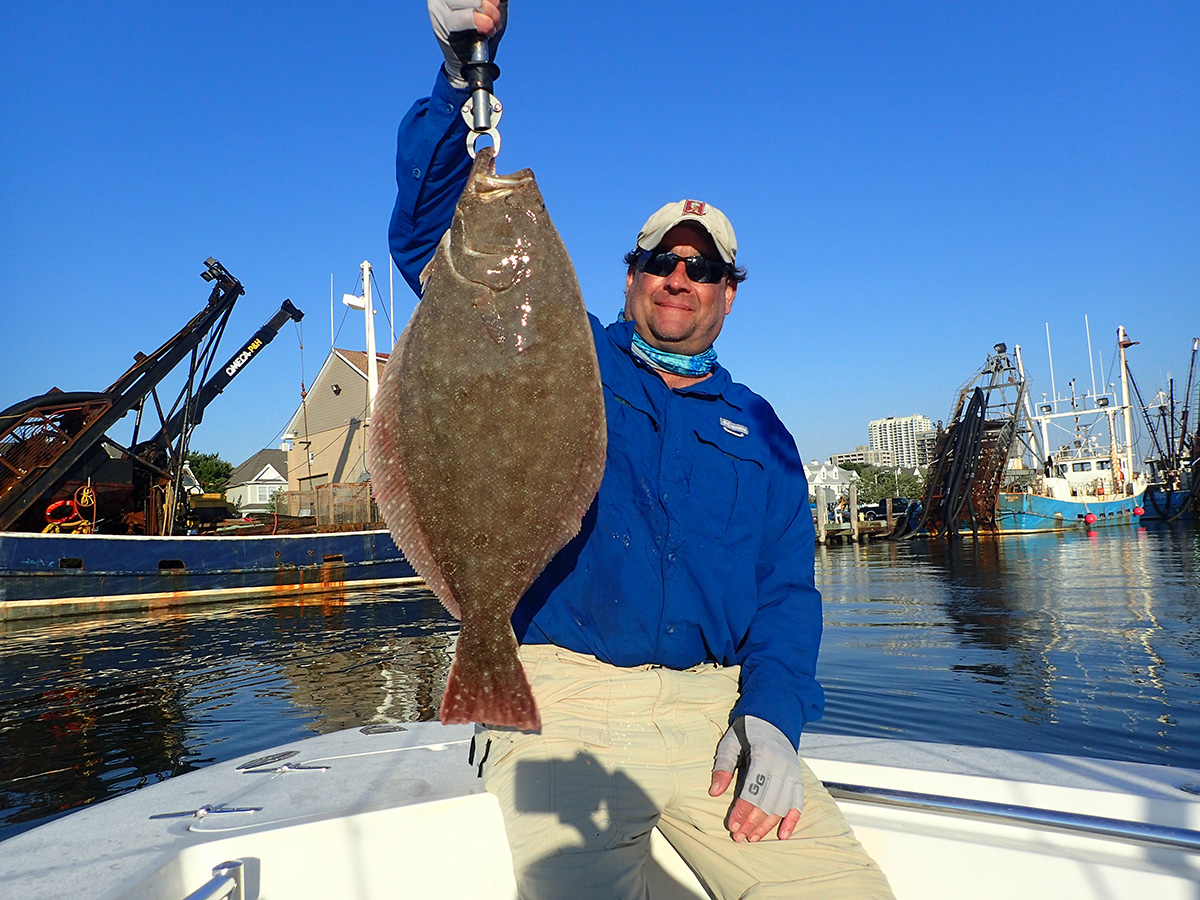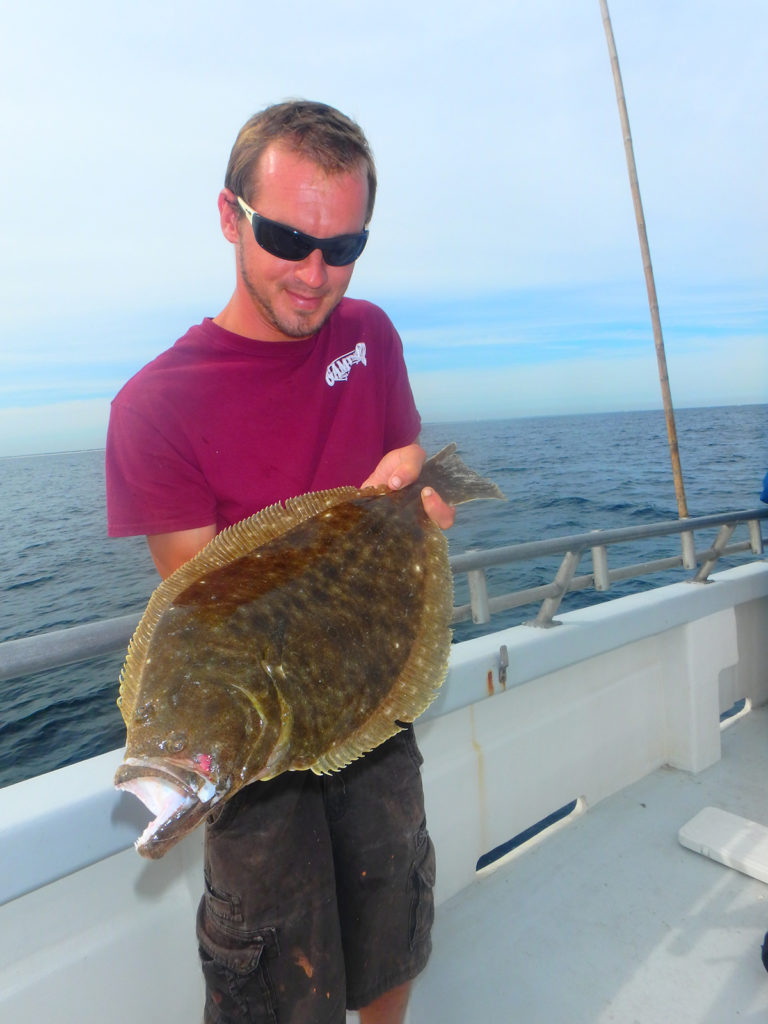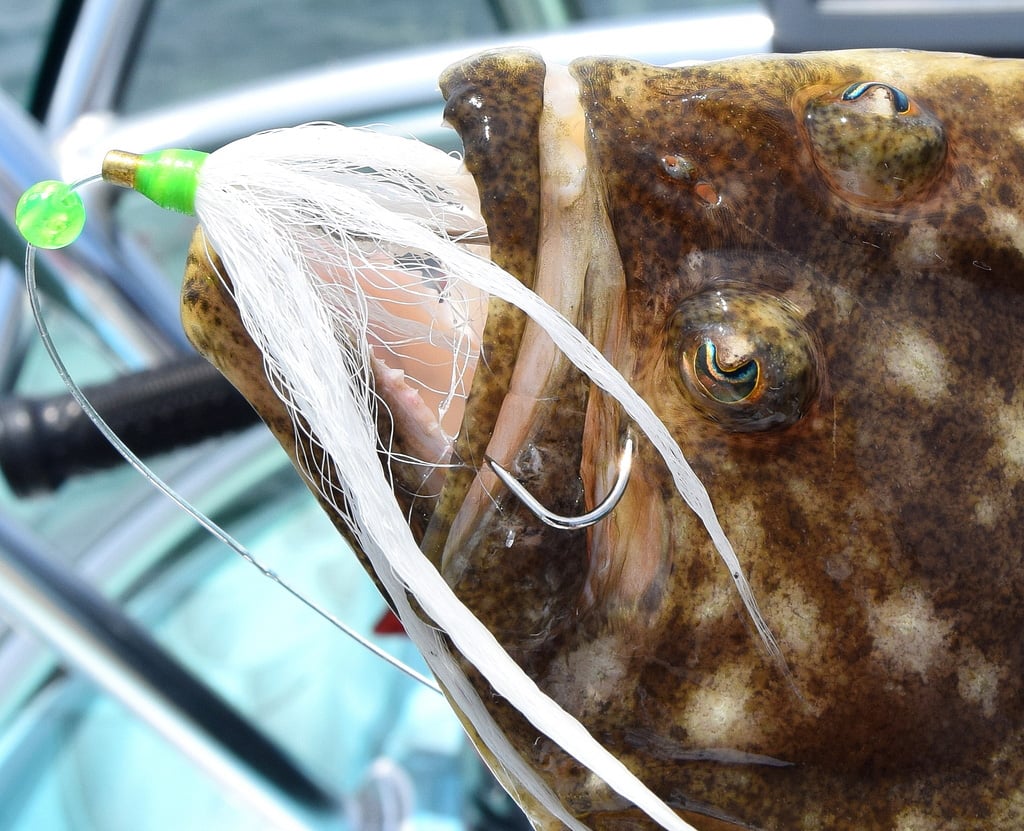
For years fluke fishermen have plied the sloughs, sod banks, reefs, wrecks, fathom banks, coral beds, rocky structures, and other areas for fluke with great success. One largely neglected area to seek out fluke is the spawning grounds of the squid that migrate inshore to feed and lay their eggs.
Squid are inshore-offshore migrators just like fluke and are an important food source for these fish as they move from offshore to inshore and vice versa.
In the spring when the fluke move inshore from their offshore wintering grounds, they follow the inshore movement of squid and sand eels as these forage species make their own life treks inshore as well. It is estimated that these two species each encompass 10 percent of the diet of fluke during their lifespan and serve as an important food source to nourish the migrating fluke.
At night, squid occupy the upper reaches of the water column, well out of the attack range of the benthic feeding fluke. During the day, however, and particularly when spawning, squid are well within striking distance of fluke and are sought out as food items. Squid move inshore to lay eggs during the early summer on bottom structures hard enough for them to attach their fronds of egg packets, which wave in the currents until they are ready to hatch. Squid are very short-lived creatures; most live less than one year and a majority die shortly after they are done spawning.

Squid Habitat

Squid are quite the abundant species and are found from the canyons to the bays being fed upon by many pelagic and demersal species. Fluke fishermen look for them as they serve as a bait rich mobile feeding platform for fluke seeking out these high protein meals. Squid are intelligent, quick-moving creatures capable of avoiding predators who give away their presence. Fluke, though, being camouflaged and lying on the bottom, are ideally equipped to use their lightning fast attack in close range to capture a bait with their sharp conical teeth. These cephalopods are particularly vulnerable to attack when they are attaching their frond like egg packages to a substrate on the ocean floor. The good news for fluke fishermen is that these large size forage baits attract large fluke.
Squid can be seen with a good color depthfinder as small blue vertical streaks, usually in groups. In the fall they are seen hovering around wrecks and are often a good sign that that wreck holds a lot of big fluke. In the late spring and early summer the biggest squid move in first followed by their smaller counterparts producing a spawning period lasting from May through August. The trick to finding their location is to find the substrate they use to attach their egg packets.
The author found these squid spawning grounds quite by accident a few years back. While fishing on one of New Jersey’s artificial reefs, the boat drifted off of the reef and onto a relatively flat bottom. While busy untangling a line, the anglers still fishing had multiple hook ups of keeper sized fluke in quick order. We continued to fish that area the rest of the trip, concentrating on areas where the fishfinder read the telltale signs of squid congregations. This area was mostly snag free but occasionally a rig would bring up a piece of shell or other debris lying on the ocean floor. It is these, or similar, structures that the squid use to attach their egg packets.
Patterns & Locations
The nice thing about wreck fishing is that you know the fluke will be at that same location year after year, as these spots have fixed bait systems like crab species there year after year. Fishing the squid spawning grounds is quite different as these mobile bait systems vary their location. The bottom substrate that squid use to lay their eggs is quite vast, and many areas of the ocean floor have enough structure for them to use for this purpose.
The other complicating factor is that the squid generally remain in one area for a few weeks before either dying off after they spawn or moving off to other spots. The typical pattern is that a very good bite ensues when the grounds are first discovered with a good number of groupings of the spawning squid present. As the days and weeks pass, the squid presence and number of flounder bites diminish requiring relocating fishing activity to a different area.

The prospect of finding these schools of bait can be quite a good find though as they are often located off of any snaggy structure and well away from any competing boats (Unless they find you!). The best way to locate these areas is to move along at a speed your fishfinder can still give you a good enough reading to see the squid below in the water column—a speed around 6 knots. Once located, the schools of squid may be spread out over quite a large area, allowing for drifts up to 1 mile.
I’ve personally found it best to do longer drifts in the beginning to locate the pockets of the heaviest concentrations of the squid, then shortening up the drift profile to fish in the most productive environs.
Calamari Equipped
One might assume that the best bait to use when fishing the squid grounds is squid. You can use squid jigs to try to catch the squid that are beneath the boat or use squid purchased from the local bait shop—squid strips or whole squid both working well. Do not be afraid to use rather long strips or whole squid, as fluke are capable of consuming squid that are longer than the fluke itself, a phenomenon observed first hand by the author when examining the stomach contents of captured specimens.
Interesting though, is how well other rigs work also. Many anglers onboard my boat Vetcraft capture fluke using a multitude of rigs and bait. Anglers can appeal to the fluke mimicking the scent characteristics of the squid as mentioned above but can also appeal to them by mimicking the profile and movement characteristics of that bait species. The twitching of the bucktail and the flaring of the rig effectively mimics the characteristic movement of the squid.

Other baits too, like Gulp! have enough chemical appeal to stimulate the fluke to feed. In reality, the same bait and rigs that work in other fishing situations work well on the squid grounds. Both traditional “dragging rigs” and bucktail rig variations are productive, and anglers can use their favorite rigs and techniques.
Next time you are out targeting fluke in the summer and having a slow day, try motoring around and see if you can locate a field of these spawning squid. An otherwise slow day can turn into one your most productive days.



